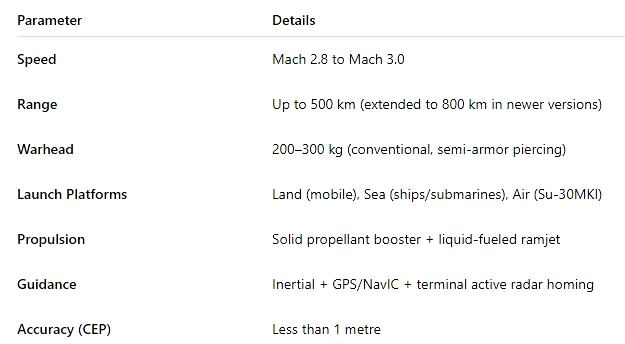

By Defence and Strategic Affairs Editor
The BrahMos missile stands as one of India's most formidable military assets—symbolizing technological excellence, international cooperation, and decisive firepower. Developed jointly by India’s Defence Research and Development Organisation (DRDO) and Russia’s NPO Mashinostroyenia, the BrahMos is widely regarded as the world’s fastest supersonic cruise missile in active service. It has played a defining role in shaping India's offensive and defensive postures, particularly in the maritime and land-attack domains.
In the context of the recent Operation Sindoor, a large-scale retaliatory strike launched by India in response to the Pahalgam terror attack and Pakistan’s cross-border provocations, the BrahMos missile proved to be a game-changer. It demonstrated not just technological superiority but also a strategic shift in India’s doctrine—from reactive containment to proactive kinetic dominance.
Development and Origins
The BrahMos missile takes its name from two great rivers: the Brahmaputra (India) and the Moskva (Russia), symbolizing Indo-Russian cooperation. The project was initiated in 1998 under an intergovernmental agreement and the first test flight was successfully conducted in 2001.
Key development milestones include:
BrahMos Block-I for land-attack roles (2007)
BrahMos Block-II and III with advanced trajectory maneuverability (2010)
Naval and Air-launched versions including ship-launched (INS Rajput) and air-launched variants (Su-30MKI) inducted post-2017
BrahMos-NG (Next Generation) and hypersonic variants currently under development
Technical Specifications
The missile’s supersonic speed and “low-observable” profile make it extremely difficult to intercept. Its “sea-skimming” capability further enhances its survivability against modern air defense systems.
Variants of BrahMos
1. BrahMos Block-I, II, III: Land attack missiles with varying levels of maneuverability and target discrimination.
2. BrahMos-A (Air-launched): Modified for launch from Su-30MKI; capable of long-range deep strike missions.
3. BrahMos-NG (in development): Lighter, smaller version suitable for smaller aircraft like Tejas Mk1A.
4. BrahMos-ER (Extended Range): Range increased from 290 km to over 500 km.
5. BrahMos-II: Hypersonic version under development with expected speeds of Mach 6–7.
Strategic Significance
1. Force Multiplier: BrahMos empowers India’s armed forces with a standoff strike capability against time-sensitive and high-value targets.
2. Deterrence Against China and Pakistan: Deployed in Ladakh, Arunachal Pradesh, and the western front, it creates a credible deterrent.
3. Export Potential: Philippines signed a $374 million deal for BrahMos in 2022. Southeast Asian and Middle Eastern nations are in talks, enhancing India's status as a defense exporter.
4. Tri-Service Capability: Very few missile systems in the world offer the operational flexibility to be launched from air, land, and sea platforms.
Role in Operation Sindoor
Operation Sindoor, launched in early May 2025, was a precision military operation aimed at dismantling Pakistan-based terror camps, degrading cross-border air defense installations, and eliminating forward military build-ups along the Line of Control (LoC) and international border.
Objectives of BrahMos Deployment:
Destroy fortified terror launchpads deep inside Pakistan-occupied territories
Neutralize enemy radar stations and command-and-control nodes
Eliminate high-value military infrastructure
Disable runways and airbases supporting PAF forward deployment
Impact Assessment:
Caused paralysis of Pakistani C4ISR infrastructure (Command, Control, Communications, Computers, Intelligence, Surveillance, Reconnaissance)
Forced redeployment and dispersal of PAF assets away from forward areas
Enabled unhindered UAV and air strikes by Indian forces for 72 hours post initial strikes
Sparked panic within Pakistani military leadership, as evidenced by unofficial statements and media blackout
Pakistan’s Response and Regional Fallout
Pakistan attempted to downplay the strikes but scrambled F-16s and JF-17s in defensive sorties. However, none could challenge the BrahMos salvo due to its sheer speed and trajectory. China reportedly raised concerns over India’s escalatory dominance and reiterated its objection to BrahMos deployment near Arunachal.
Regional observers including analysts from Jane’s Defence Weekly and RAND Corporation praised India’s “swift, clinical use of precision weapons” and labelled BrahMos the “linchpin” of the operation’s success.
Lessons and Implications
1. Transformation of Indian Military Doctrine: The BrahMos’ use in Operation Sindoor marks a shift from deterrence-by-denial to deterrence-by-punishment.
2. Jointness and Interoperability: Its use across Air Force, Navy, and Army underscores the maturation of India’s integrated warfighting doctrine.
3. Weaponised Diplomacy: Its successful deployment has increased interest from Vietnam, Brazil, and South Africa—giving India both military and diplomatic leverage.
Future Developments
1. BrahMos-NG by 2026: Will equip Tejas Mk1A, enhancing indigenous aircraft’s punch.
2. Hypersonic BrahMos-II: Prototype testing expected soon; would bring India into elite hypersonic club.
3. Submarine-launched variant: Trials in late-stage; gives India true second-strike capability from undersea platforms.
The BrahMos missile is not just a weapon system—it is a symbol of India’s rising military-industrial complex, international collaboration, and strategic assertion in an increasingly volatile region. Operation Sindoor proved beyond doubt that BrahMos is not just a deterrent but a decisive tool of military coercion and preemptive power projection. Its success in the operation has not only punished adversaries but also redefined India’s doctrinal credibility on the global stage.
In the evolving geopolitics of South Asia, the BrahMos has fired not just a missile—but a message.
